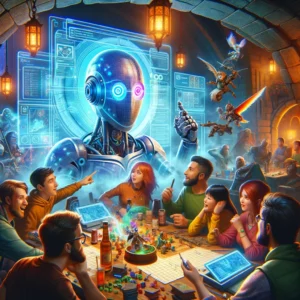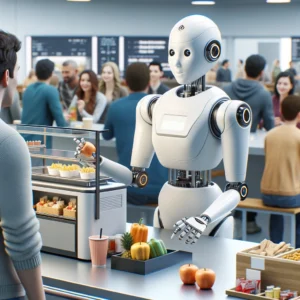
The Singularity Watch Newsletter: Safety in the Age of Robots
Dear Futurists and Safety Savants,
Welcome to the fifth edition of The Singularity Watch. As we dream of a future intertwined with robotics and AI, it’s essential to consider not just the capabilities but also the safety of our automated companions. Today, we’re focusing on often overlooked topic of robotic safety – sensors like LiDAR, 3D Camera and Encoders, and advanced safety-rated motion systems.
The Eyes and Ears of Safety – LiDAR and Encoders
Imagine a world where robots navigate and interact with us as seamlessly as we do with each other. This is where LiDAR and Encoders come in – the essential sensory tools that let robots ‘see’ and ‘feel’ their surroundings. These technologies are crucial in ensuring that our robotic friends don’t accidentally go bump in the night (or the day). While external-looking technology like LiDAR, 3D Cameras or RGB Cameras look outward to detect and assess the robot’s environment, allowing powerful AI or simple algorithms to determine the safest approach Encoders look inward. Sensors like encoders, either optical, physical or magnetic allow the robot to understand its internal motion systems. From drivetrains to manipulators, encoders of various types allow the robot to understand where and how its motion systems are reacting to control and environmental inputs.
Safety-Rated Motion Systems – The Art of Safe Movement
Robotics isn’t just about moving; it’s about moving right. Safety-rated motion systems are the choreographers of this delicate dance, ensuring that each robotic movement is smooth, precise, and, above all, safe. These systems are what keep industrial robots from turning a factory floor into a scene from a sci-fi movie. Safety-rated systems must comply with a number of regulations depending on the region and industry often including 3rd party certification.
Avoiding the Ouch in Automation
From assembly lines to autonomous cars, safety-rated sensors and motion systems play a pivotal role. They’re the difference between automation that works and automation that wounds. In an era where human-robot collaboration is the norm, these systems are the peacekeepers, ensuring coexistence is harmonious and, most importantly, safe.
Singularity and Safety – Walking Hand in Hand
As we stride towards the Singularity, the importance of safety in robotics and AI cannot be overstated. It’s a balancing act between pushing the boundaries of what’s possible and ensuring we don’t overstep into the realm of the risky. After all, we want our robot companions to be adventurous, not reckless.
Conclusion & A Call to Action
Safety in robotics and AI isn’t just a feature; it’s a cornerstone. As we envision a future with more integrated and advanced automation, let’s remember that the best innovations are those that enhance not just efficiency but safety.
Join The Singularity Report Community
Your thoughts, experiences, and insights are invaluable in shaping the narrative around robotics and AI. Join our mailing list to be a part of this exciting journey and to stay updated on the latest in robotics and AI safety.
Explore Safety-Rated Systems
Want to delve deeper into the world of robotic safety systems? Check out our member-only articles to learn about the latest advancements in safety-rated sensors, motion systems and the ever-evolving regulatory environment.
Until our next edition, stay curious, informed, and most importantly, stay safe!
-Ravi Baboolal
The Singularity Watch – Charting the Course to Tomorrow’s Tech, Today

